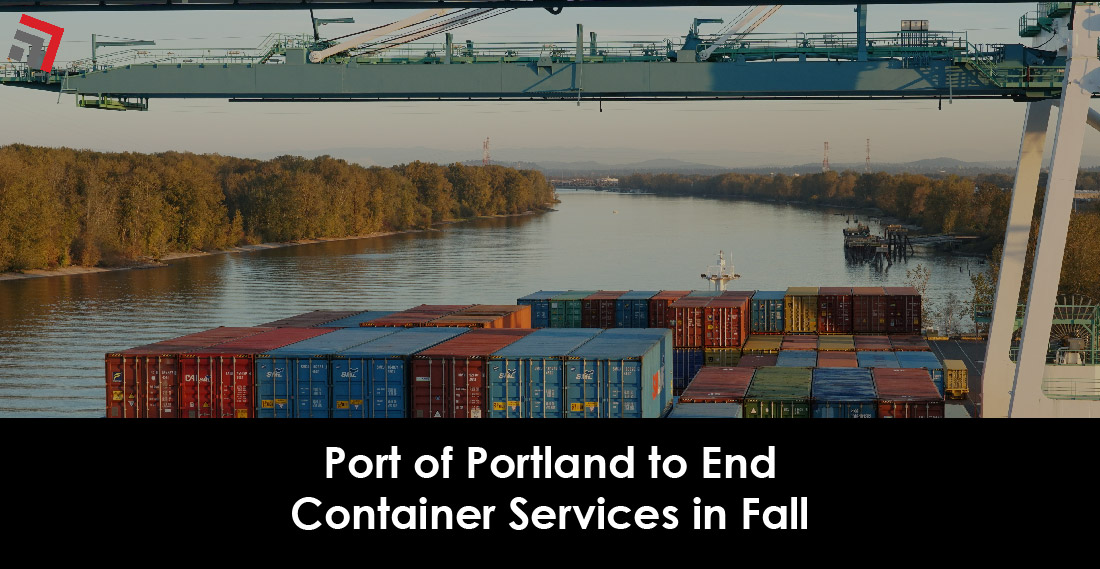The Port of Portland has announced that it will cease container shipping services in October following unsuccessful efforts to keep Oregon’s only container terminal open.
The West Coast hub alerted stakeholders that it does not possess enough funding to sustain service at its container terminal after a deal with a third-party operator fell through.
Terminal is no longer financially viable
In a March press release, the Port of Portland reported that it has lost more than $30 million from container operations over the past three years, including a projected $14 million shortfall in the current fiscal year. Ironically, business (container volumes) has steadily grown since 2019, but the port blames rising operating costs detracting from this performance.
The port worked with state legislators, shippers, and other stakeholders to forge a path that would financially preserve container service. The main plan was the seeking of an $8 million investment from the state of Oregon to keep operations afloat while the port pursued a long-term lease with a third-party terminal operator and negotiated rates with ocean carriers. However, these efforts were proven futile.
Closure is a big blow to regional shippers, farmers
The port’s written statement which announced the end to container handling had a sorrowful tone. While accepting its fate, the Port of Portland made it clear that its decision was necessary and that they understood the lone terminal’s importance to the region and greater Oregon.
“We know that this terminal is a critical statewide asset — it is worthy of further discussions to come up with a financially sustainable business model for container service that has significantly more state funding and investment…For now, we have run out of financial options and must take this step,” the statement read.
While not as bustling as other West Coast ports, Portland’s container terminal serves as a niche, but critical, fixture for the supply chains of small businesses and farmers throughout the region. These commodities are typically products, like lumber, for construction sites as well as agricultural resources, like seed, hay, and animal feed. The latter is particularly special to the port’s container business. Every year, thousands of outbound containers full of harvested crops stop through Portland. A lot of the volume comes from farmers in eastern Washington and Idaho, who barge loads down the Columbia River before loading onto ocean vessels.
However, despite Portland’s importance in that regard, the port ultimately has struggled to make ends meet when it only services a relatively small market. Few shippers have Portland on their itineraries as other, larger, ports, like Oakland, Southern California, or Seattle, absorb the majority of imports and exports ran through the West Coast.
Aside from minimal market share, the port is also geographically challenged. Its facilities are roughly 100 miles from the Pacific Ocean, downstream on the Columbia River. In addition to the distance, the waterway’s limited depth acts as a natural barrier, restricting larger container ships from accessing the port.
As Portland’s terminal shutters in October, affected shippers have voiced concerns over higher transportation costs. In lieu of the facility that they have historically relied on, these smaller businesses and farmers will have to explore alternative arrangements, such as trucking goods to ports in other states.
Once Portland’s container terminal closes, the nearest one for most of these shippers would be at Washington’s Port of Tacoma.
Final Thoughts
Container operations have ceased at the Port of Portland before. In 2015, two ocean carriers, who represented virtually all container business at the port, announced they would stop calling at the northwest hub, citing delays in handling and hostilities between the terminal operator and the West Coast’s dockworker union.
It was not until 2020 that the Port of Portland reopened container services. South Korea-based carrier SM Line implemented weekly transpacific services to Portland. Throughout the pandemic shipping crisis, the port continued to garner opportunities as it became an alternative gateway amid stifling congestion and delays at other West Coast ports.
Contact one of our team members if you have any questions regarding this topic or any others in domestic logistics.
More blogs similar to this:



Recent Comments